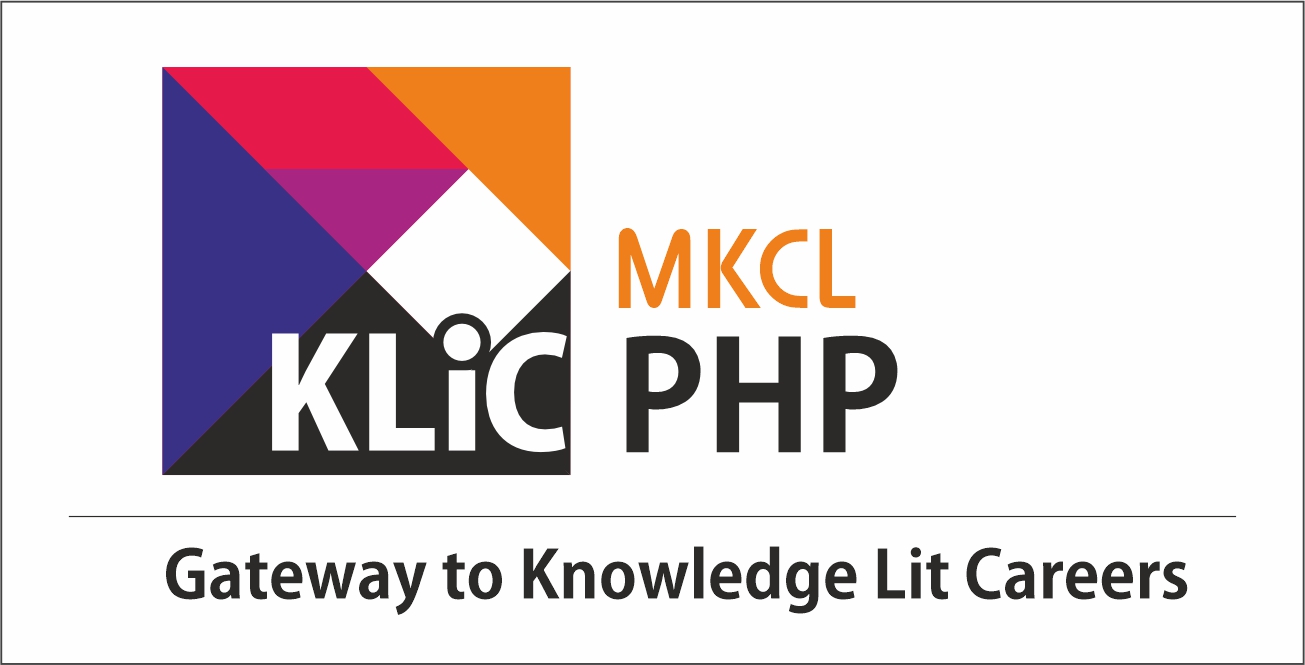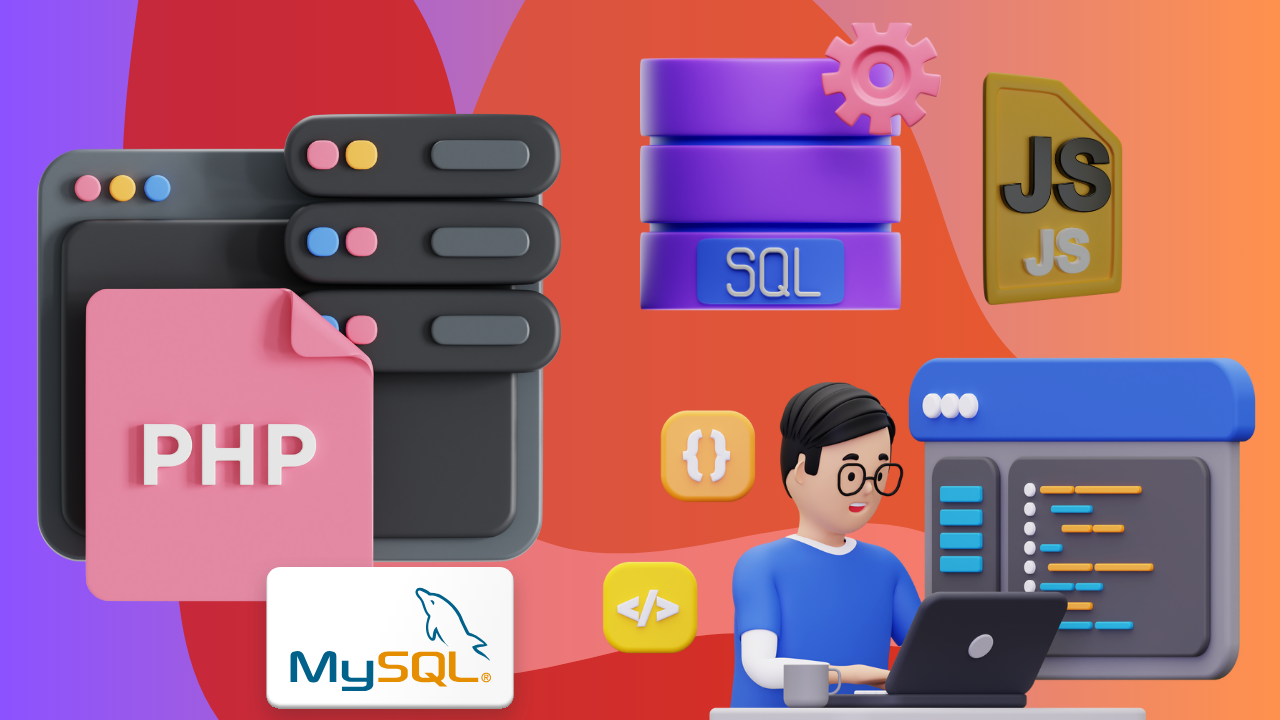- Explain the history, evolution, and versions of PHP to build a strong foundation.
- Demonstrate the use of arithmetic, comparison, and logical operators in PHP.
- Utilize single-dimensional, multidimensional, and associative arrays to store and manipulate data
- Create user-defined functions, pass parameters by reference, and return values effectively.
- Implement classes, objects, constructors, destructors, and inheritance in PHP.
- Manipulate data using arrays, linked lists, queues, and stacks in PHP.
- Design and build a basic PHP-based website incorporating form validation, user authentication, and database interactions.

Fundamentals of PHP
Get started with PHP scripting for backend development, form handling, and session control.
Introduction
What you'll learn ?
- Describe PHP syntax, history, and evolution.
- Apply PHP operators and conditional statements to control program execution.
- Develop logic using looping structures such as for, while, and foreach for repetitive tasks.
- Manipulate arrays to store, retrieve, and process data efficiently.
- Design reusable functions to improve code modularity and efficiency.
- Onstruct PHP programs using classes, objects, and OOP principles.
- Configure and run PHP applications on a web server.
Syllabus
- History
- Background
- Early versions of PHP
- Current release
- Upgrading from PHP 3
- Upgrading from PHP 4
- The creators of PHP
- Introduction
- Shorthand unary operators
- Arthemetic Operator
- Increment/Decrement Operator
- Comparison operators
- Complete operator list
- The Ternary Operator
- The scope resolution operator
- Operator precedence and associativity
- Introduction
- True & False
- IF else
- Example with coding
- Break
- Continue
- Switch
- Introduction
- For Loop With Syntax
- While Loop With Syntax
- While Loop With Syntax
- Each Loop With Syntax
- loops Basic Example
- For Loop With Syntax
- For loop in searching of Array
- For loop in Sorting of Array
- While Loop With Syntax
- Do While Loop With Syntax
- For Each Loop With Syntax
- Introduction
- Types Of Arrays
- Single Dimensional Array
- Example with Coding
- MultiDimensional Array
- Example with Coding
- Introduction
- Parameters
- Example with Coding
- Passing by reference
- Example with Coding
- Introduction
- Default Parameter
- Example with Coding
- Returning By Reference
- Example with Coding
- Insertion in arrays
- Deletion in Arrays
- Sorting Arrays
- Traversing in arrays
- Transpose in arrays
- Merging in arrays
- Merging in arrays
- Inserting in linked list
- Deletion in linked list
- Example with Coding
- Queue
- Enque and Deque
- Introduction
- Defining Class
- Creating A class
- Example with Coding
- Object
- How to Use object
- Polymorphism
- Example with Coding
- Data Abstraction
- Constructor
- Destructor
- Example with Coding
- Introduction
- Example with Coding
- Iterators
- Example with coding
- Friend Function
- Example with Coding
- Example with Coding
- Creating the Public HTML Pages
- Creating the Database and its Tables
- Example with coding
- User Login Authentication
- Example with Coding
Certificate
- MKCL provides certificate (for 30/60/90 hours courses) to the KLiC learner after his/her successful course completion.
Academic Approach
The Academic Approach of the course focuses on the “work centric” education i.e. begin with work (and not from a book !), derive knowledge from work and apply that knowledge to make the work more wholesome, useful and delightful. The ultimate objective is to empower the Learner to engage in socially useful and productive work. It aims at leading the learner to his/her rewarding career as well as development of the society.
Learning methodology
- Learners are given an overview of the course and its connection to life and work.
- Learners are then exposed to the specific tool(s) used in the course through the various real-life applications of the tool(s).
- Learners are then acquainted with the careers and the hierarchy of roles they can perform at workplaces after attaining increasing levels of mastery over the tool(s).
- Learners are then acquainted with the architecture of the tool or Tool Map so as to appreciate various parts of the tool, their functions and their inter-relations.
- Learners are then exposed to simple application development methodology by using the tool at the beginner’s level
- Learners then perform the differential skills related to the use of the tool to improve the given ready-made outputs.
- Learners are then engaged in appreciation of real-life case studies developed by the experts.
- Learners are then encouraged to proceed from appreciation to imitation of the experts.
- After imitation experience, they are required to improve the expert’s outputs so that they proceed from mere imitation to emulation.
- Finally, they develop the integral skills involving optimal methods and best practices to produce useful outputs right from scratch, publish them in their ePortfolio and thereby proceed from emulation to self-expression.
Evaluation Pattern
Evaluation Pattern of KLiC Courses consists of 4 Sections as per below table:
| Section No. | Section Name | Total Marks | Minimum Passing Marks |
|---|---|---|---|
| 1 | Learning Progression | 25 | 10 |
| 2 | Internal Assessment | 25 | 10 |
| 3 | Final Online Examination | 50 | 20 |
| Total | 100 | 40 | |
| 4 | SUPWs (Socially Useful and Productive Work in form of Assignments) | 5 Assignments | 2 Assignments to be Completed & Uploaded |
MKCL’s KLiC Certificate will be provided to the learner who will satisfy the below criteria:
- Learners who have successfully completed above mentioned 3 Sections i.e. Section 1, Section 2 and Section 3
- Additionally, learner should have completed Section 4 (i.e. Section 4 will comprise of SUPWs i.e. Socially Useful and Productive Work in form of Assignments)
- Learner has to complete and upload minimum 2 out of 5 Assignments
Courses Fee Structure from 01 July, 2025 Onwards
KLiC 30 hour course fee applicable from 01 July, 2025 all over Maharashtra| KLiC Course Duration | MFO: MKCL Share (Including 18% GST) |
ALC Share (Service Charges to be collected by ALC) |
|---|---|---|
| 30 hours | Rs. 300/- | Rs. 1,500/- |
Important Points:
* Above mentioned fee is applicable for all Modes of KLiC Courses offered at Authorised Learning Center (ALC) and at Satellite Center
* Total fee is including of Course fees, Examination fees and Certification fees
* MKCL reserves the right to modify the Fee anytime without any prior notice
* Above mentioned fee is applicable for all Modes of KLiC Courses offered at Authorised Learning Center (ALC) and at Satellite Center
* Total fee is including of Course fees, Examination fees and Certification fees
* MKCL reserves the right to modify the Fee anytime without any prior notice
